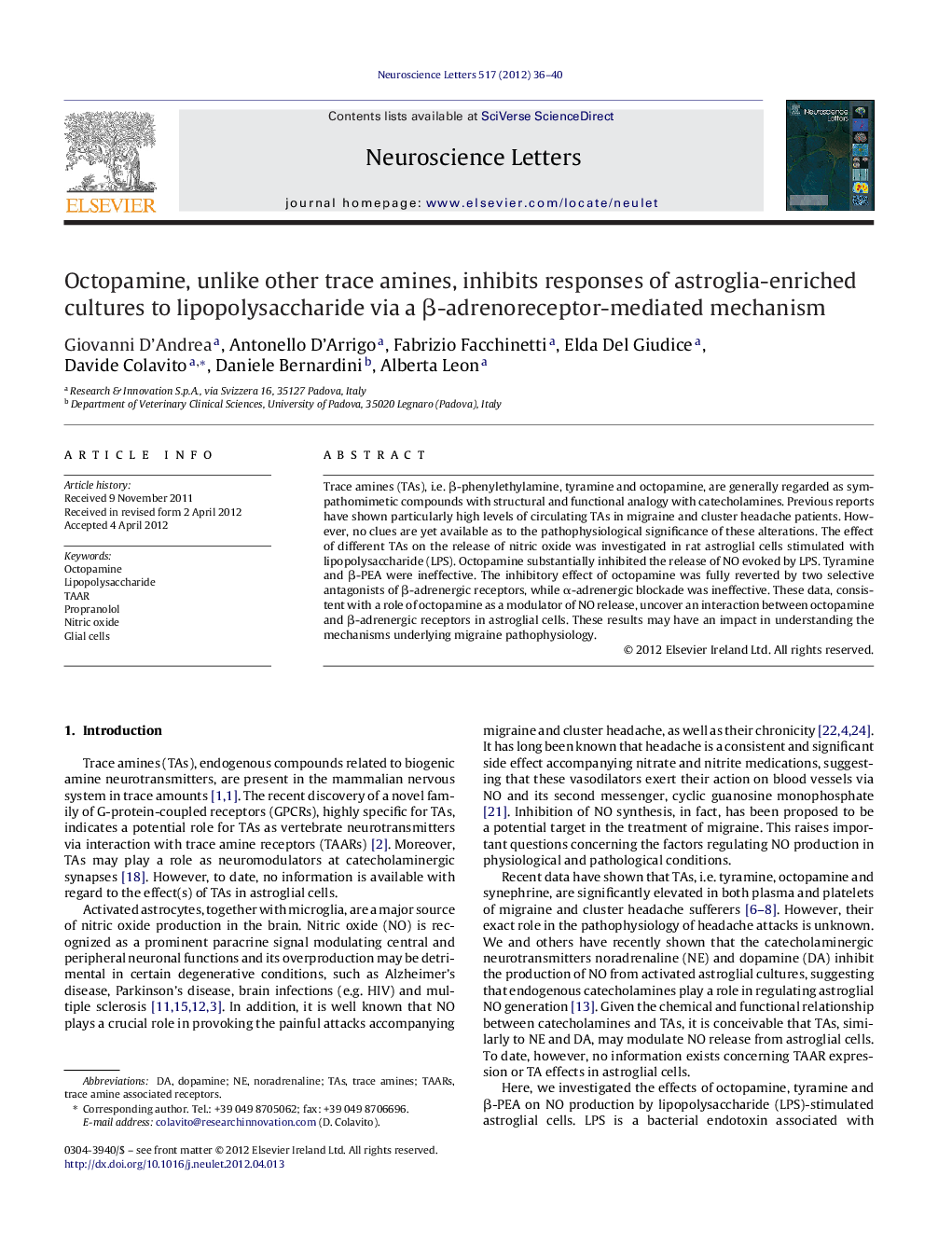| Article ID | Journal | Published Year | Pages | File Type |
|---|---|---|---|---|
| 4344546 | Neuroscience Letters | 2012 | 5 Pages |
Trace amines (TAs), i.e. β-phenylethylamine, tyramine and octopamine, are generally regarded as sympathomimetic compounds with structural and functional analogy with catecholamines. Previous reports have shown particularly high levels of circulating TAs in migraine and cluster headache patients. However, no clues are yet available as to the pathophysiological significance of these alterations. The effect of different TAs on the release of nitric oxide was investigated in rat astroglial cells stimulated with lipopolysaccharide (LPS). Octopamine substantially inhibited the release of NO evoked by LPS. Tyramine and β-PEA were ineffective. The inhibitory effect of octopamine was fully reverted by two selective antagonists of β-adrenergic receptors, while α-adrenergic blockade was ineffective. These data, consistent with a role of octopamine as a modulator of NO release, uncover an interaction between octopamine and β-adrenergic receptors in astroglial cells. These results may have an impact in understanding the mechanisms underlying migraine pathophysiology.
► Trace amines are known to be increased in patients with migraine and aura. ► Their pathophysiological role is currently unknown. ► We found octopamine to modulate LPS-induced microglial release of nitric oxide. ► The effect is exerted through the β2-adrenoceptors. ► Different TAARs are induced by LPS, suggesting indirect roles of these receptors.
